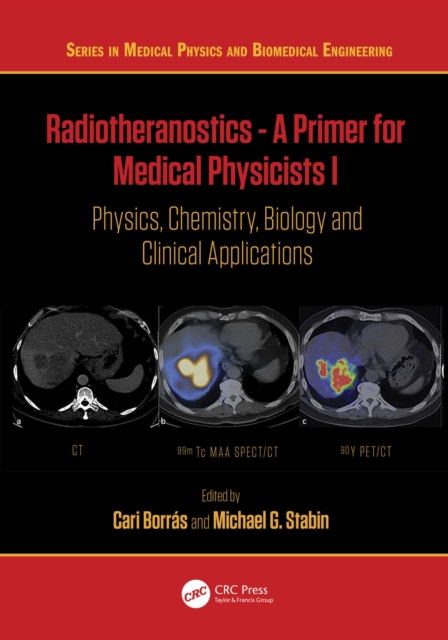
Radiotheranostics - A Primer for Medical Physicists I : Physics, Chemistry, Biology and Clinical Applications PDF
Edited by Cari Borras, Michael G. Stabin
Part of the ISSN series
Description
This book covers scientific, clinical, and educational aspects of radiotheranostics in cancer control. Setting the framework, the first volume defines radiotheranostics and describes the history of radionuclide therapy and theranostics, and the biology of cancer. It examines the clinical applications of unconjugated radionuclides, such as '³'I and 22³Ra, and of radionuclide-conjugated cancer-specific vectors: peptides, small molecules, antibodies, and nanoparticles; introduces clinical trials and drug development; and reviews epidemiological studies and the adverse effects of radionuclide therapy - both radiation injuries and chemical toxicity. It presents the chemistry and physics of radionuclide production, discusses radioactivity measurements and traceability, and addresses important instrumentation aspects: calibration, quantitative imaging, and quality control. Volume I concludes with guidance on the education, training, and competence of a radiotheranostic multidisciplinary team and summarizes the principal physics characteristics of theranostics today - including many to be expanded in the second volume - while offering a glimpse into tomorrow. This volume provides the foundations for the more advanced second volume, which explores dosimetric and radiation safety, aiming to empower medical physicists and demonstrate to the cancer community how to improve cancer control and yield increased patient survival times.It will be a valuable reference for medical and health physicists with basic knowledge of nuclear medicine.
Key Features
- Provides a comprehensive introduction to the topic, presenting readers with thorough treatment in a cohesive two-volume book
- Presents a rigorous approach while remaining accessible to students and trainees in the field
- Contains consistent and extensive references to allow readers to delve deeper into the subject
Information
-
Download - Immediately Available
- Format:PDF
- Pages:230 pages
- Publisher:CRC Press
- Publication Date:20/02/2024
- Category:
- ISBN:9781003836070
Information
-
Download - Immediately Available
- Format:PDF
- Pages:230 pages
- Publisher:CRC Press
- Publication Date:20/02/2024
- Category:
- ISBN:9781003836070










